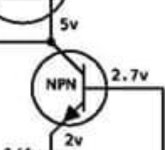Not enough information.
Plan for transients as the circuit powers up or down. To give you an intelligent answer, we would need to see the entire circuit. How much current will it see? What is full supply voltage? Does it have to be low noise (probably not)?
For low voltage and low current, non-critical, a 2N3904 or equivalent would be the go-to. But seeing the rest of the circuit could change all that.
Plan for transients as the circuit powers up or down. To give you an intelligent answer, we would need to see the entire circuit. How much current will it see? What is full supply voltage? Does it have to be low noise (probably not)?
For low voltage and low current, non-critical, a 2N3904 or equivalent would be the go-to. But seeing the rest of the circuit could change all that.
Not enough information.
+1
Make, model at the very least, full circuit showing how that part is configured if you have it.
I guess it's a secret circuit. The quality of answers you get depends on the information you can give.
You don't need a 300V transistor unless the tube shorts. Under those conditions your transistor will overheat and fail anyway.
So the application is a constant current source in a tube cathode. Plugging a hot tube in with power on might be your worst case situation apart from a shorted tube. Normal dissipation and voltage drops are no problem. The MPSA42 is lower beta, you might want something with a higher beta. Choose accordingly.
You don't need a 300V transistor unless the tube shorts. Under those conditions your transistor will overheat and fail anyway.
So the application is a constant current source in a tube cathode. Plugging a hot tube in with power on might be your worst case situation apart from a shorted tube. Normal dissipation and voltage drops are no problem. The MPSA42 is lower beta, you might want something with a higher beta. Choose accordingly.
In truth, even an 80V part would probably be fine for production. I'll bet you could use a 40V part and get away with it under normal operating conditions. Without knowing where the tube grid could go we have no idea what transient conditions that transistor might see.
supernut, only you know what the entire circuit looks like. So only you know what conditions that circuit may see.
supernut, only you know what the entire circuit looks like. So only you know what conditions that circuit may see.
Bugs amps v2 6E5P
I wanted to post this recent build by Doug De Young (the more productive half of Bug Amps). it's a gorgeous build and an elegant circuit. I can't wait to listen to it.
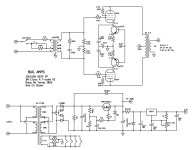
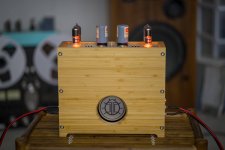
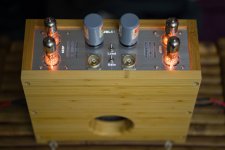
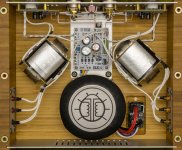
The amp employs a pair of 6E5P in a class A PP design with input transformers. The input txs are vintage JBLs with a number of taps that Doug has used to include switchable gain. For an amp with DC heaters, it's very quiet. The amp has respectable distortion and frequency response:
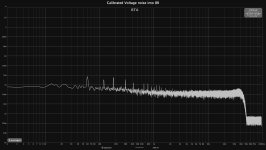

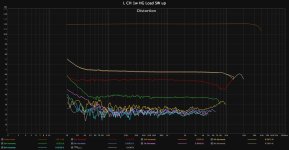
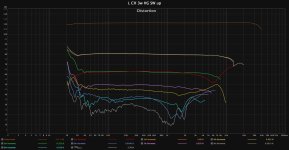
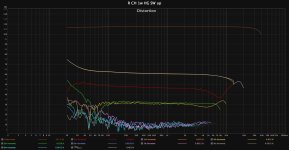
I'm sure...




The amp employs a pair of 6E5P in a class A PP design with input transformers. The input txs are vintage JBLs with a number of taps that Doug has used to include switchable gain. For an amp with DC heaters, it's very quiet. The amp has respectable distortion and frequency response:





I'm sure...
- seanzozo
- Replies: 19
- Forum: Tubes / Valves
Thanks huggygood,
Now there was an entirely pointless mystery. Why?
A 2N2222A is pretty much a utility transistor, just about anything would have done. The part was specified, so why second guess the designer? If you want to, ask him directly.
Now there was an entirely pointless mystery. Why?
A 2N2222A is pretty much a utility transistor, just about anything would have done. The part was specified, so why second guess the designer? If you want to, ask him directly.
I can't post full schematic because at first I want to inquire only "NPN part number" which I think I should ask in Solid state amp forum.
the part of post that include 6E5P picture, I take a risk to post. 50% in mind, I am afraid of post be delete due to wrong forum topic.
However, the post is still not deleted. I am relief.
I would like to apologies for Anatech about this. Please understand me. Anatech try to help me even not enough information. I only just know that max mA of 6E5P is 43 +/- 10 ma so I post 53ma.
I hope voltage and mA is suffice information. but I am wrong due to "beta" which I don't know
the part of post that include 6E5P picture, I take a risk to post. 50% in mind, I am afraid of post be delete due to wrong forum topic.
However, the post is still not deleted. I am relief.
I would like to apologies for Anatech about this. Please understand me. Anatech try to help me even not enough information. I only just know that max mA of 6E5P is 43 +/- 10 ma so I post 53ma.
I hope voltage and mA is suffice information. but I am wrong due to "beta" which I don't know
Hi supernut,
No, your question was on the solid state part. If it was a tube question your post would have been moved to the tube area, not removed.
Whenever you ask a technical question, you have to include all the relevant information. Otherwise we can't know what a small section may see for conditions. It's like asking your doctor a question but hiding a bunch of other things that would affect what they might conclude. We don't want to give you incorrect information.
Beta is the current gain of a transistor in this case. Current goes in the base and controls the current through the collector. All of that current exits through the emitter. So if a transistor has a beta of 100, 1 mA might go in the base-emitter, and 100 mA would go through the collector-emitter. Not exactly but close enough to illustrate my meaning. So variations might affect the current more than say a beta of 250 or so in this application. Beta does vary with current and temperature, but the concept holds. You want varying voltage on the collector to not affect the current in the base. There are other factors as well (Early voltage for one). Voltage variations from base to emitter will change the collector current, minimizing the effective base-emitter variations will reduce this. This is for a constant current source application.
You can also describe this in transconductance, just like a tube or FET. A triode doesn't make a great current source because it has low transconductance. A Pentode is much better, but both of these need a large voltage drop to work. So that leaves a FET device, or a bipolar transistor in order of increasing transconductance. Helpful?
No, your question was on the solid state part. If it was a tube question your post would have been moved to the tube area, not removed.
Whenever you ask a technical question, you have to include all the relevant information. Otherwise we can't know what a small section may see for conditions. It's like asking your doctor a question but hiding a bunch of other things that would affect what they might conclude. We don't want to give you incorrect information.
Beta is the current gain of a transistor in this case. Current goes in the base and controls the current through the collector. All of that current exits through the emitter. So if a transistor has a beta of 100, 1 mA might go in the base-emitter, and 100 mA would go through the collector-emitter. Not exactly but close enough to illustrate my meaning. So variations might affect the current more than say a beta of 250 or so in this application. Beta does vary with current and temperature, but the concept holds. You want varying voltage on the collector to not affect the current in the base. There are other factors as well (Early voltage for one). Voltage variations from base to emitter will change the collector current, minimizing the effective base-emitter variations will reduce this. This is for a constant current source application.
You can also describe this in transconductance, just like a tube or FET. A triode doesn't make a great current source because it has low transconductance. A Pentode is much better, but both of these need a large voltage drop to work. So that leaves a FET device, or a bipolar transistor in order of increasing transconductance. Helpful?
- Home
- Amplifiers
- Solid State
- NPN part number for this voltage for amplifier
